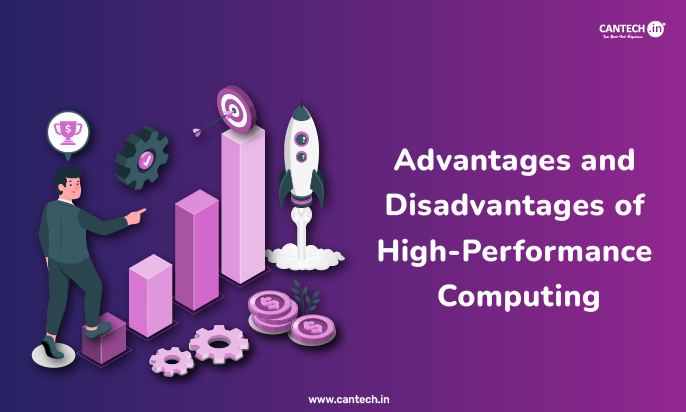You may have experienced computers handling big calculations in a super-fast way. If you are wondering how that happens, then this blog will help you understand that. It will comprehensively respond to your question by answering ‘What is CUDA’.
Well, it is a technology that uses the advanced capabilities of GPUs (Graphics Processing Units). Developers can run multiple tasks simultaneously and process huge amounts of data with ease. Thus, it makes applications work faster.
Basically, NVIDIA created CUDA to turn GPUs into powerful computing engines. It boosts performance for gaming, machine learning, etc in ways that were once impossible.
A regular CPU processes tasks one at a time and makes things slow. But with CUDA, thousands of tiny processors could work together at the same time.
This blog will discuss what CUDA is, how it works, its benefits, and more. Read on to know more…
What is CUDA?
CUDA’s full form is Compute Unified Device Architecture. It is a computing platform and programming model developed by NVIDIA. It provides a powerful set of tools to offload computation-heavy tasks from the CPU to the GPU. This way, it boosts the performance of the applications that need high-speed processing.
Moreover, developers can use the power of NVIDIA GPUs for general-purpose computing tasks also called GPGPU (General-Purpose computing on Graphics Processing Units).
Also, it uses many cores of the GPU to execute multiple tasks in parallel. That is, it enables parallel computing on NVIDIA GPUs. All in all, traditional CPUs cannot match its efficiency.
With GPU’s parallel computational power, CUDA solves GPGPU. Traditionally, they were solved by CPUs. Furthermore, as computing tasks are shifted to the GPU, CUDA takes the performance of various applications such as AI/ML, video rendering, scientific simulations, etc. to the next level.
Other Features of CUDA –
- CUDA programming supports languages like C, C++, and Fortran so it is easy and accessible for developers with the knowledge of these languages.
- Due to parallel computation capabilities, CUDA can immensely speed up tasks like deep learning, image processing, scientific research, and more.
- It gives the advantage of managing various types of memory efficiently such as local, shared, global, and texture memory. This further improves performance and resource allocation.
How to Download CUDA
You can download CUDA with easy steps.
If CUDA is meant for development work for you, you can download it from the official NVIDIA website.
CUDA For Windows Users
- First, you need to check if your system has a CUDA-supported GPU and the right version of Visual Studio.
- Next, you can download the latest version of CUDA and follow the detailed installation guide available on the official website. The step-by-step instructions will help you set up the software on your machine.
CUDA For Linux Users
- You need a GPU that is compatible with CUDA. Also, ensure you have a version that supports Linux with a GCC compiler and toolchain.
- You can install CUDA using your distribution package manager or you can download it directly from the NVIDIA website.
- The CUDA installation guide for Linux users provides clear instructions as per Linux distribution.
You can download older versions of CUDA from the official website.
How CUDA Works
As discussed before, CUDA offloads computational tasks from the CPU to the GPU. It turns complex and intensive computational tasks to perform parallelly on the GPU and makes the process much faster.
Below points can explain how it works –
-
Kernel Execution
The tasks are grouped into kernels (sets of instructions to be executed on the GPU). They are further divided into blocks and each block has multiple threads.
-
Parallel Computation
Furthermore, each thread of a block performs a computation in parallel with other threads. Thus, CUDA can do wonders with this parallel approach. It processes large datasets more efficiently than traditional serial computing methods.
-
Memory Hierarchy
With different memory levels, it optimizes performance. Local memory is closest to each thread and it is the fastest. On the other hand, global memory is shared across all threads and is slower.
-
Synchronization
As the computation on the GPU finishes, the results are synchronized and transferred back to the CPU where it is further processed.
Architecture of CUDA
The CUDA architecture is based on a massively parallel design. It includes multiple Streaming Multiprocessors (SMs) and each of the SMs has Streaming Processors (SPs).
- Each SM contains multiple SPs that can run thousands of threads concurrently.
- These SPs are equipped with multiplication and addition units (MADs) and multiplication units (MUs) for performing high-speed calculations.
- For example, the GT200 GPU has 30 SMs with 240 SPs. It can process over 1 teraflop of data.
- The G80 card (earlier model) includes 16 SMs with 128 SPs. It supports more than 12,000 concurrent threads.
CUDA Alternatives
CUDA is incredibly powerful but other technologies are available that offer similar functionalities –
- OpenCL (Open Computing Language) is the biggest competitor to CUDA. It was developed by Apple and the Khronos Group (launched in 2009).
- OpenCL is more versatile as it supports a wider range of hardware. It works on NVIDIA, and AMD GPUs, and CPUs too. Whereas, CUDA works on NVIDIA.
CUDA Applications
Various industries have adopted CUDA. Check out CUDA in practical applications below –
-
Artificial Intelligence and Machine Learning
To make training and inference of neural networks and computations in deep learning models super-fast
-
Scientific Research
CUDA can process massive datasets in parallel for simulations and complex calculations in physics, chemistry, biology, etc.
-
Image and Video Processing
Real-time video rendering and editing are made faster and more efficient.
-
Computational Finance
Fast processing of large amounts of financial data for applications such as high-frequency trading and risk analysis.
Other fields that use CUDA are computational biology, oil and gas exploration, medical imaging, and weather forecasting.
History of CUDA
- The development of CUDA can be traced back to the early 2000s. Researchers at Stanford University introduced Brook – a platform for general-purpose programming models.
- NVIDIA funded this project. Also, Ian Buck (and the lead researcher) eventually joined the company.
- In 2007, NVIDIA released CUDA as a commercial platform for GPU-based parallel computing.
- CUDA has evolved with many releases since then. It now supports more programming languages such as C++ and Python sling with its original support for C.
Benefits of CUDA
Below are the main advantages of CUDA that make it a popular choice –
- CUDA is free and easy to install.
- It has a strong community and offers a wide range of libraries for various tasks.
- It is much faster than competitors like OpenCL.
- It supports parallel processing on NVIDIA GPUs i.e. multiple threads execute simultaneously which speeds up computational tasks.
- It supports languages like C, C++, and Python. Thus, developers can easily integrate it into their existing workflows.
- Memory management and control ensure optimal performance.
- CUDA is used in healthcare, finance, entertainment, scientific research, etc. Thus, it supports various industries.
Limitations of CUDA
- It is exclusive to NVIDIA GPUs i.e. it cannot be used with other hardware like AMD GPUs.
- New versions of CUDA may not support older hardware. Also, updates may cause issues with previous versions.
- CUDA has limited interoperability with other programming models such as OpenGL. Thus, integration with certain tools is more challenging.
Conclusion
What is CUDA? It is an innovative technology for continuous progress in various high-end fields that requires processing and analyzing of data at top-notch speeds. It performs parallel computations most efficiently for complex applications that require massive amounts of processing power. The role of CUDA is becoming more and more critical in powering the innovations of modern applications.
FAQs
What is the typical CUDA program flow?
Below is the normal flow –
- Load data into CPU memory.
- Copy data from CPU to GPU memory.
- Call the GPU kernel.
- Copy results from GPU to CPU memory.
- Use results on the CPU.
How do I enable CUDA on a GPU?
You need to install the NVIDIA CUDA Toolkit and the appropriate GPU drivers from the official NVIDIA website to enable CUDA on your GPU.
What are the key features of CUDA?
CUDA provides powerful parallel processing capabilities and fine memory management. It also supports multiple programming languages. Further, it has a rich ecosystem of libraries and tools.








